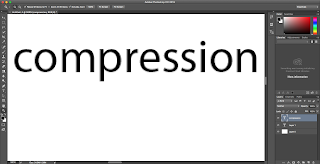180 degrees rule
Thursday, 22 October 2015
Tuesday, 20 October 2015
shot types
The most common uses for shot types is to create tension, establishing where the characters in the scene are taking place, and to express emotion for example if you use an establishing shot you set up where the scene is taking place and give a background to what's happening. On the other hand you can use extreme close ups to create tension and uneasiness to the audience.
Tracking shots are used frequently across a wide range of genres from war films to romantic comedies. I think this is because it can show the character moving from A to B while the camera stays on the actor. here is an example
production process in filmmaking
The very first step of making a film is an outline of an idea. Usually this is given to a writer by a producer to start writing a basic script. This will then go back to the producer for him to read through and then he will pitch it to the production company to apply for funding. Depending on the movie the funding will depend on the type and ambition of the movie. Funding can be increased if the studio has done market research to show that this genre will be a success. For example they employ a big name actor or actress like Tom Cruise to star in their film this can drive up the budget to ensure they are onboard with the film and this will ensure the film is bankable and could help to sell the film because people might go and see the film just because of a well known actor.
Then they would employ a director, this has to be the right director suited to the film, for example you don't want a director who's style and previous films are romantic comedies to do an action war film, you have to tailor the director to the film. Often when you get a director they have a preferred crew and staff.
The director will be onset for three to four months directing the cast and crew through the production process, and even when the filming is done the director will instruct the editing and CGI and post production.
Then they would employ a director, this has to be the right director suited to the film, for example you don't want a director who's style and previous films are romantic comedies to do an action war film, you have to tailor the director to the film. Often when you get a director they have a preferred crew and staff.
The director will be onset for three to four months directing the cast and crew through the production process, and even when the filming is done the director will instruct the editing and CGI and post production.
Thursday, 15 October 2015
shrek scene
We chose Shrek because it was humorous and it would be a fun scene to shoot. Not a lot happened in the scene but we could experiment different shot types and techniques but for the most part didn't quite pay off. Most of the footage was out of focus and the filming was not very smooth. To improve this I would reshoot it with a better camera focus and think out the scene more and choose a better scene to shoot with more interesting dialogue and actions.
this is the scene
this is the scene
Tuesday, 13 October 2015
Type and layout
A transition is to move between one thing to another, for example a transition in a powerpoint slide would be in between two slides.
Evolution is to start off as one thing and gradually transform to another, for example the film industry has evolved over the past decade with advances in technology.
Evolution is to start off as one thing and gradually transform to another, for example the film industry has evolved over the past decade with advances in technology.
Location shooting
We had to consider the lighting when we were shooting the film because it was early in the day and the sun was casting a shadow on the field. This meant we had to film quickly to keep consistency on each shot. We also had to consider background noise and bystanders. If we did not consider these we would had inconsistent and obviously jumpy footage
Shooting on location is in some instances essential to get a wide range of sets, background, and environments to make a scene more interesting and carry through the director's vision.
Thursday, 8 October 2015
photoshop edit vintage
I took a picture of the ground and merged it with a picture of the weir in Bath. to create a vintage looking postcard. I did this by adjusting the opacity and adding several filters: half-tone and vibrance. To create the finished effect I rubbed out the lake to create contrast within the image. I think that there is room for improvement on this picture to make the colours brighter as the image at the moment is quite dark and not that colourful. To illuminate this problem I would introduce a lighter filter.
Subscribe to:
Comments (Atom)





















































